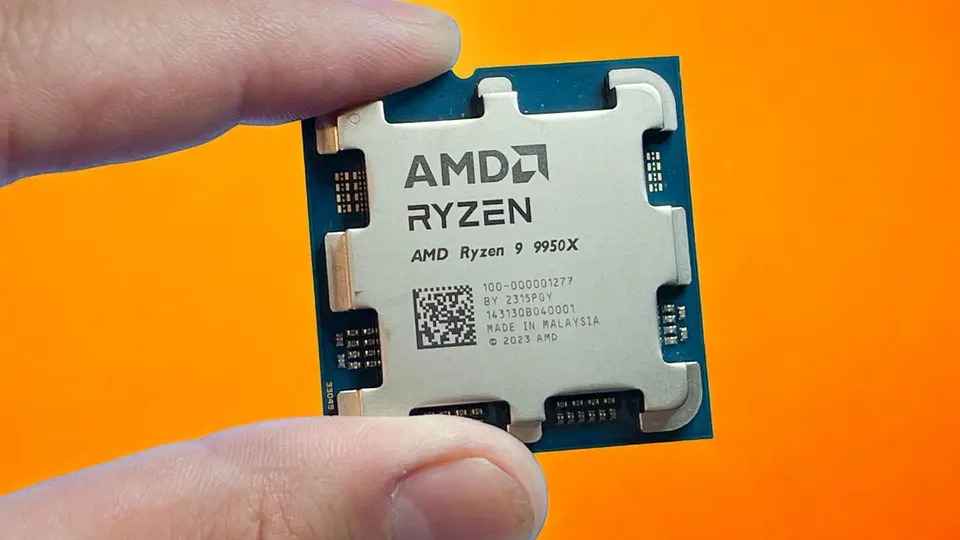Ryzen 9 9950X Processor Review

We examine the top-tier ZEN 5 processor, the Ryzen 9 9950X, which comes equipped with an impressive 16 cores. This model not only offers the highest core count but also delivers the fastest speeds available to consumers, pushing beyond the high-end category into the realm of enthusiast-level hardware. Built on the latest ZEN 5 architecture, it seamlessly integrates with existing motherboards like the X670 and B650, requiring only a simple BIOS update. Despite being based on the new ZEN 5 architecture, these processors can easily be installed on compatible motherboards with just a BIOS upgrade. With its outstanding performance, support for PCIe Gen 5, DDR5, and a CPU clock speed exceeding 5.9 GHz, this processor is poised to become a favorite among enthusiasts and creators alike.
Recently, AMD officially introduced its first ZEN 5-based Ryzen 9000 processors. While there have been some graphics card updates this year, the component hardware space has seen few major releases. AMD has confirmed the launch date for its Ryzen 9000 series desktop CPUs, which includes four SKUs: the 16-core Ryzen 9 9950X, 12-core Ryzen 9 9900X, 8-core Ryzen 7 9700X, and 6-core Ryzen 5 9600X. The Ryzen 7 9700X is a particularly notable model in the lineup, sparking considerable discussion regarding its performance compared to previous generations. AMD has also addressed speculation about changes to Thermal Design Power (TDP), confirming that the Ryzen 7 9700X will debut with an exceptionally low 65W TDP. The higher-end Ryzen 9 9950X will have a 170W TDP, while the Ryzen 9 9900X will feature a 120W TDP. Both the Ryzen 7 9700X and Ryzen 5 9600X will maintain a 65W TDP, reflecting AMD's commitment to balancing performance with power efficiency.
However, it is noted that the Ryzen 7 9000 will not achieve the same gaming performance as the Ryzen 7 7800X3D, according to AMD's Don Waligroski. For that level of performance, you'll need to wait for the X3D processors. During AMD's launch presentation, they showcased a series-to-series comparison, revealing an 11% to 22% performance increase over the previous generation while also reducing the TDP for three of the four new SKUs. This is something we plan to confirm in our reviews. The Zen 5 architecture represents a significant advancement in AMD's Ryzen 9000 series desktop processors. Despite these improvements, the socket and internal layout remain consistent, featuring an unchanged I/O die along with one or two new Zen 5-based CPU core dies, ensuring compatibility with current 500/600 series motherboards.
AMD Ryzen 9000 Series Overview
| Processor | Architecture | Cores/Threads | Boost Clock | Cache (L2+L3) | TDP |
|---|---|---|---|---|---|
| Ryzen 9 9950X | Zen 5 (TSMC 4nm) | 16C/32T | Up to 5.7GHz | 80MB | 170W |
| Ryzen 9 9900X | Zen 5 (TSMC 4nm) | 12C/24T | Up to 5.6GHz | 76MB | 120W |
| Ryzen 7 9700X | Zen 5 (TSMC 4nm) | 8C/16T | Up to 5.5GHz | 40MB | 65W |
| Ryzen 5 9600X | Zen 5 (TSMC 4nm) | 6C/12T | Up to 5.4GHz | 38MB |
65W |
The Ryzen 9 9900X is a high-performance desktop processor from AMD's Granite Ridge series, featuring 12 cores based on the Zen 5 architecture and offering 24 threads. Operating at speeds between 4.4 GHz and 5.6 GHz, this processor marks a significant leap forward with its use of exclusively full-performance cores, avoiding the integration of efficiency cores seen in some other designs. It supports the latest PCIe 5.0 interface, enabling faster data transfer rates compared to previous versions. While it includes a basic integrated graphics unit (iGPU) capable of handling simple tasks and supporting multiple high-resolution displays, the focus remains on CPU performance.
The Ryzen 9 9900X's design incorporates multiple chips, or "dies," with the primary CPU cores produced using TSMC's 4-nanometer (nm) process, which prioritizes both efficiency and performance. This processor is compatible with the latest DDR5 RAM, capable of speeds up to 5600 megatransfers per second (MT/s), and can support error-correcting code (ECC) memory depending on the motherboard. Additionally, the CPU offers 24 lanes of PCIe 5.0 for expansion, with the possibility of additional PCIe 4.0 lanes depending on the system configuration.
The integrated graphics, while not intended for heavy gaming, are built on AMD's RDNA 3+ architecture. It includes 2 Compute Units (CUs) and 128 shaders, capable of reaching up to 2200 MHz. This GPU supports DirectX 12 Ultimate and ray tracing, technologies that enhance visual detail and realism in supported content. However, the graphics unit is primarily suitable for basic tasks and supporting high-resolution displays rather than intensive gaming. This processor can handle up to four super ultra-high-definition (SUHD) monitors at 4320p resolution simultaneously, which is ideal for productivity setups requiring multiple displays. The iGPU also supports hardware encoding and decoding for popular video codecs like AVC, HEVC, VP9, and AV1, which is useful for video playback and content creation. The Thermal Design Power (TDP) for this CPU is set at 120 watts, indicative of its typical power consumption under normal loads. However, power use can rise to at least 170 watts when handling more demanding tasks or during overclocked operation, which is important to consider for system builders in terms of heat output and power supply requirements.